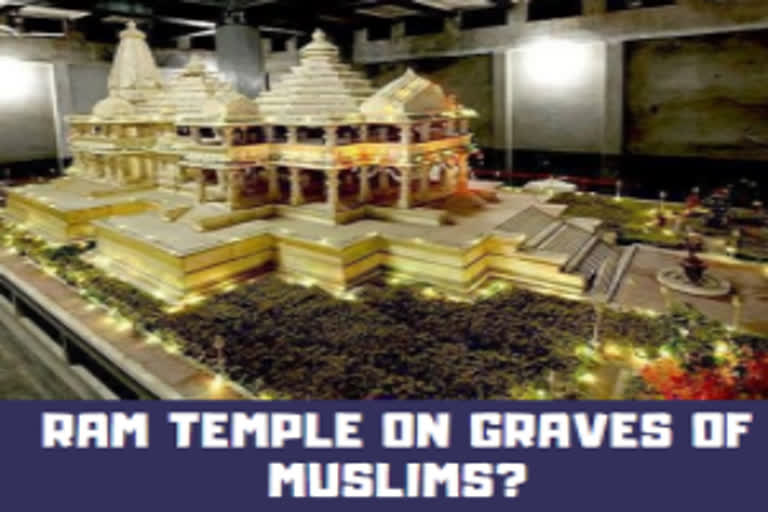Ayodhya: A group of Muslim residents in Ayodhya has sent a letter to the temple trust saying that construction of the Ram temple on the graves of Muslims will be a violation of ''Sanatan Dharma''.
The letter has been sent by M.R. Shamshad, the advocate who represented the Muslim side in the Ayodhya title dispute case.
The letter, which was sent on February 15, said a graveyard exists around the demolished Babri Masjid and that Muslims, who lost their lives in the 1885 riots in Ayodhya, were buried there.
The letter further said: "As per recorded facts, 75 Muslims were killed in the riots of 1885 and they were buried in an existing graveyard around the mosque. Even thereafter, this land was used as a graveyard."
"The Central government has not considered the issue of not using the graveyard of Muslims for constructing the grand temple of Lord Ram. It has violated ''dharma''," the letter stated.
The letter is addressed to senior Supreme Court lawyer K. Parasaran, who is heading the trust, as well as the other trustees, and asks them to consider whether it is acceptable to have a Ram temple over the graves of Muslims.
"Now you all trustees are persons of eminence in contemporary India and have the best knowledge and experience in the field of Hindu/Sanatan religion and practice. In view of religious scriptures of Sanatan Dharma you need to consider whether the temple of Lord Ram Janamsthan can have foundation on the graves of Muslims? This is a decision that the management of the Trust has to take," the letter said.
Talking to local reporters, Shamshad explained: "The fact is that about five acres of this 67-acre land is a graveyard. When the acquisition had taken place in 1993, after the demolition of the Babri mosque, the plan was to build a temple, mosque, library -- everything within this 67 acre."
He said that the government has completely ignored the claim of Muslims in 67-acre land.
The letter also refers to the Ismail Faruqui verdict of 1994, which had said that the ''disputed structure was surrounded by a graveyard on three sides''.
